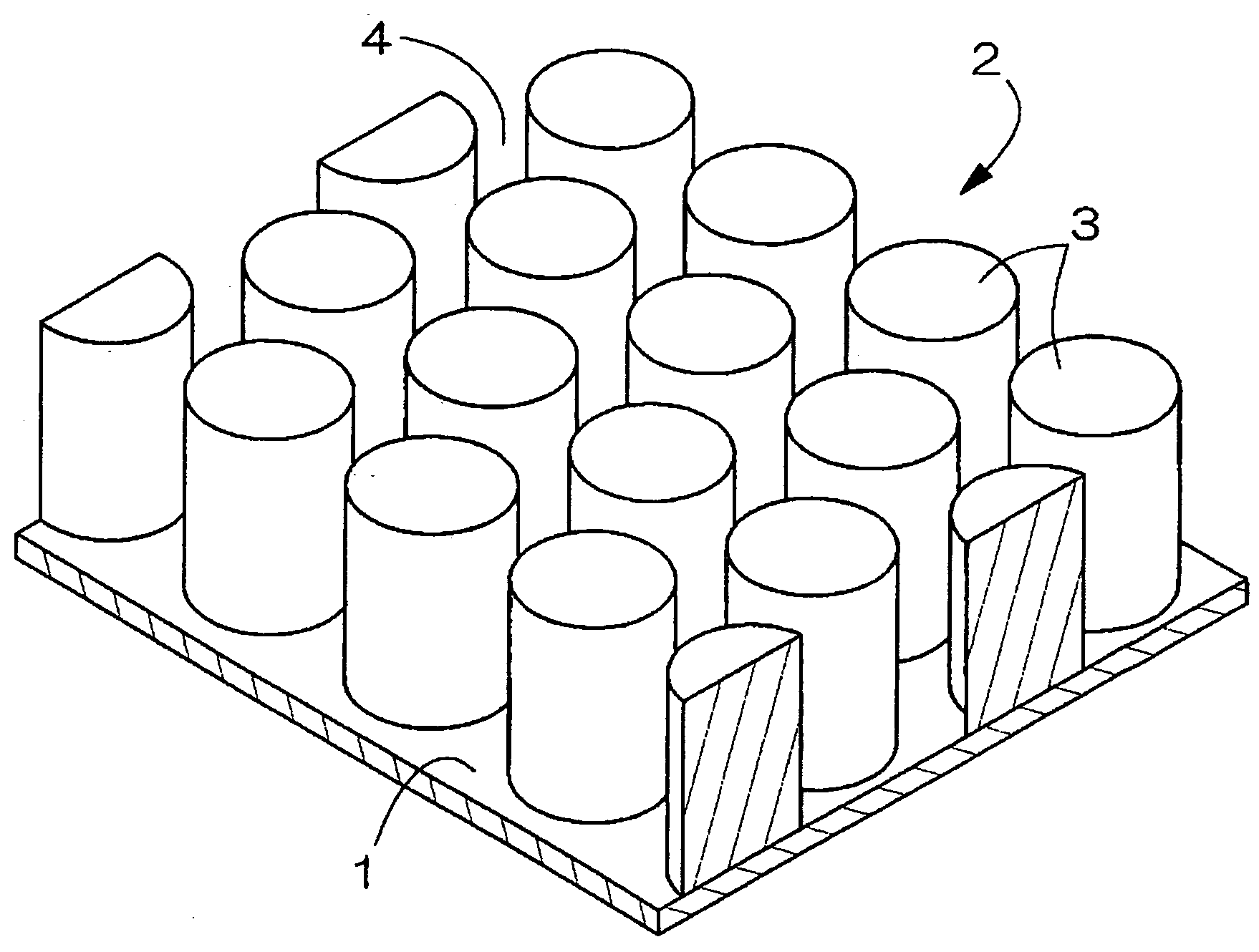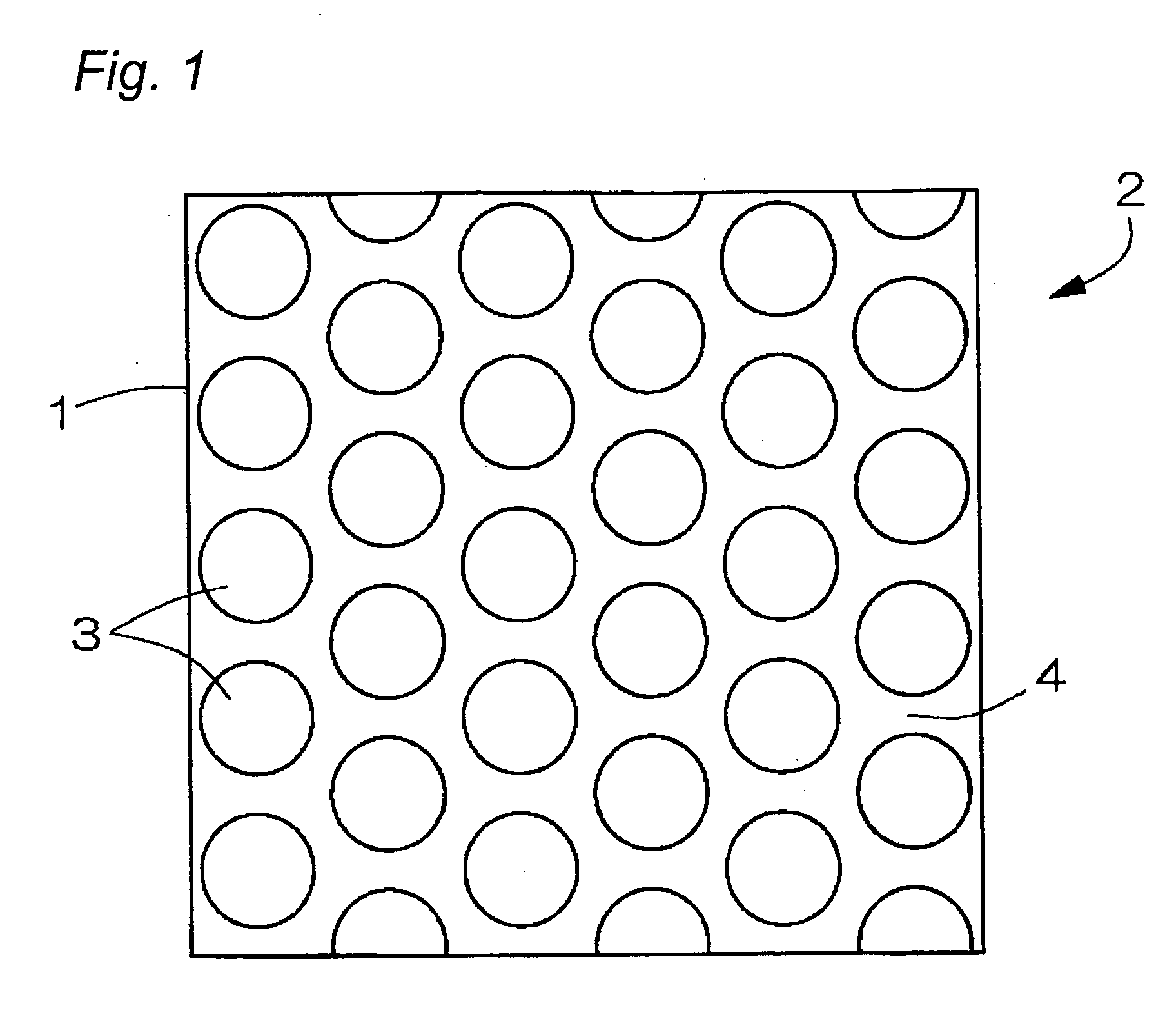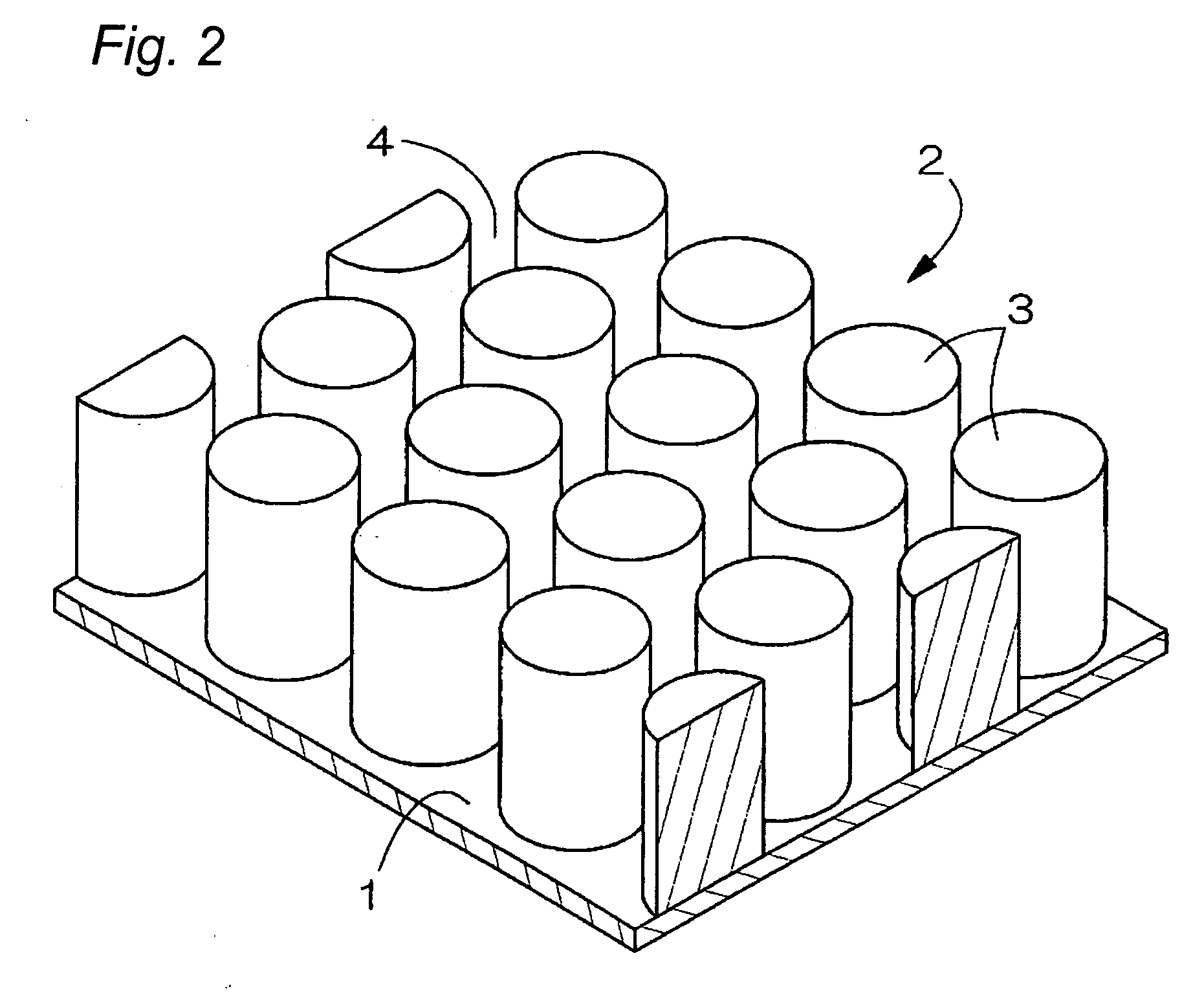Electrode used for a non-aqueous electrolyte secondary battery and a non-aqueous electrolyte secondary battery using the same for a negative electrode
a secondary battery and electrolyte technology, applied in the direction of non-aqueous electrolyte accumulator electrodes, cell components, electrical apparatus, etc., can solve the problems of reducing the volume expansion reducing the utilization rate of active materials, and reducing the efficiency of the active layer, so as to achieve the effect of increasing capacity, reducing merit, and inadequate crevices for releasing stress
- Summary
- Abstract
- Description
- Claims
- Application Information
AI Technical Summary
Benefits of technology
Problems solved by technology
Method used
Image
Examples
example 1
10 micrometers of photo-resist coating was applied to a foil surface of copper and is subjected to an exposition and development with a mask 15 having a pattern as shown in FIG. 9.
After cutting this foil to flags of 5 cm×5 cm square in size, in order to remove a surface oxide skin, fats and oils, and a soil, the flags is immersed for 4 minutes into 10% concentration sulfuric acid heated at 40° C. Then, the flags are subjected to a cathode electrolytic degreasing for a minute at 5-10 A / dm2 in a bath of degreasing liquid which comprises 5 g / l of heated sodium hydroxide, 20 g / l of ortho sodium silicate, 10 g / l of sodium carbonate (anhydrous), and 1 g / l of n-dodecyl trimethyl ammonium chloride at 60° C.
After rinsing the foils of copper with distilled water, they were again immersed into 10% sulfuric acid to remove an alkali neutralization and a surface active agent on the copper surface of foil completely. The resulting foil is used for a current collector which is subjected to a m...
example 2
A metal plating of Sn is performed on a foil of copper according to the same patterning as Example 1 and the same conditions as Example 1 except a diameter of a pattern being 150 micrometers and pitch width being 15 micrometers. Then, the plated product is subjected to the same heat-treatment as the Example 1 and an electrode which has a dot pattern of the shape of a hound's-tooth check which consists of cylindrical dots (height: 6 micrometer, diameter: 150 micrometer, and interval: 15 micrometer between dots) was obtained.
The resulting product was subjected to the same alloying processing as Example 1 and punched into a disk with a diameter of 16 mm, as a negative electrode.
PUM
| Property | Measurement | Unit |
|---|---|---|
| diameter | aaaaa | aaaaa |
| height | aaaaa | aaaaa |
| stress concentration | aaaaa | aaaaa |
Abstract
Description
Claims
Application Information
 Login to View More
Login to View More - R&D
- Intellectual Property
- Life Sciences
- Materials
- Tech Scout
- Unparalleled Data Quality
- Higher Quality Content
- 60% Fewer Hallucinations
Browse by: Latest US Patents, China's latest patents, Technical Efficacy Thesaurus, Application Domain, Technology Topic, Popular Technical Reports.
© 2025 PatSnap. All rights reserved.Legal|Privacy policy|Modern Slavery Act Transparency Statement|Sitemap|About US| Contact US: help@patsnap.com



